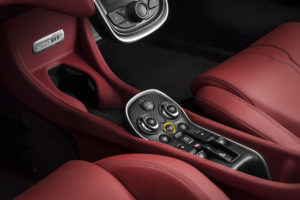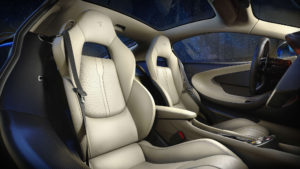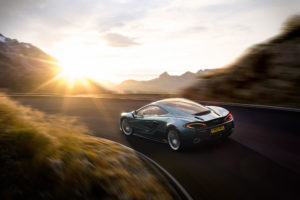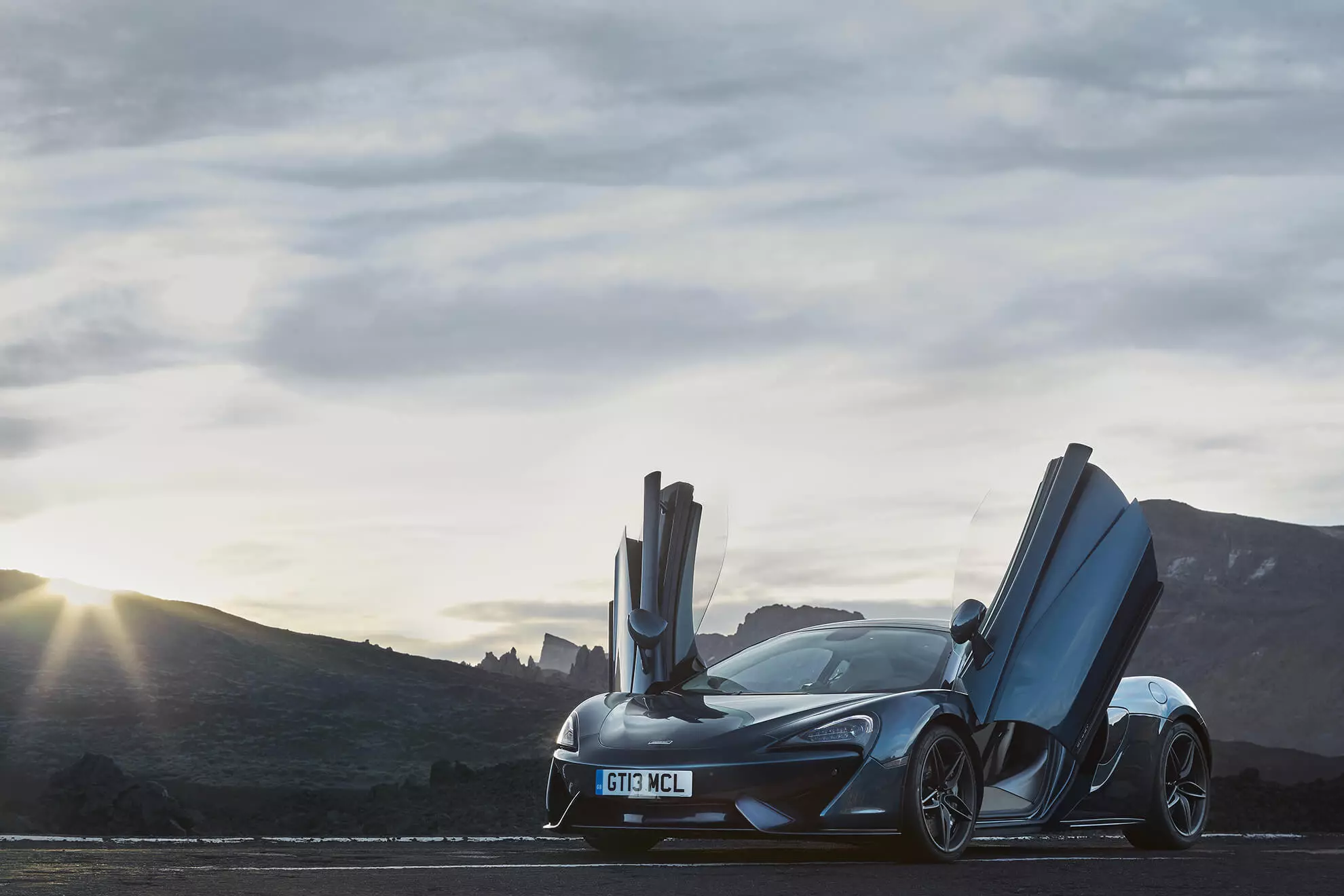A visit to a car-geek show in Tokyo shows what’s unfortunately missing from modern cars. Four days with the McLaren 570GT, by contrast, was all one could ask for—and then some.
By Dr. Adnan AhmeD
I LOVE DENTISTRY, but I love cars more. (Shhh, don’t tell anyone.) You would say the same thing if you’d been able to snag a new McLaren 570GT and spend some glorious hours piloting it around.

I had earlier taken delivery of this volcano-orange beast at my practice in northwest Ohio. It was like a scene out of an old Western, when something new and highly unusual arrives in town, and the locals emerge for a gander. Within minutes I was getting texts from patients inquiring about it. Word travels faster these days than in the Old West.
A quick gaze, indeed, is all you need to know this car is in a class by itself. Ferraris and Lamborghinis are beautiful, sure, but a McLaren is something truly special. Upon entering the cockpit through the wicked scissor doors, you set eye on a PlayStation-style setup in which you can choose the displays you wish to see. Fire it up and release the power of 562 ponies. It’s surprisingly comfortable, putting me in mind of the air-suspension vehicles popular in the 1980s, but put it in “track” mode and you’ll unleash a ferocious demon that gets only angrier the more you agitate it. I had warned my staff not to go for a drive with me after eating lunch, but did they listen? They did not, and an afternoon of nausea was their predictable reward.
The 570GT’s traction control is superb. It will not permit you to do donuts (not, ahem, that I tried). The steering is razor-sharp. The car’s carbon-fiber monocoque shell makes it feel like your very own Tony Stark Iron Man suit. It’s basically the closest thing you can get to a grown-up go-kart, and I mean that as a compliment: The car’s entire body is just one piece.

A YEAR AGO in these pages I filed a dispatch from the Geneva Motor Show, so this year I made my way across the Pacific instead. The timing of my visit didn’t coincide with the famed Tokyo Auto Salon, alas, so I had to make do with a monthly event called the Morning Cruise, held in Daikanyama, an area known as Tokyo’s Brooklyn. (What the Japanese version of avocado toast is, I have no idea. Avocado toast, perhaps.)
The theme vehicle of the Morning Cruise was the Honda NSX (known in the U.S. as the Acura NSX). More than 100 versions of the car dotted the event space, from the earliest iterations from 1990 to the newly refreshed hybrid. It was great to see a legend together with its predecessors. The fact that the Acura NSX was such a huge success and provided great everyday usability forced Ferrari, Lambo and other high-end automakers to develop quality reliable supercars. They could spot a talented newbie, after all, and knew they had to get their act together. Today, a three-decade-old Acura NSX with a zillion miles on the odometer can still be sold for absurd money—testament to the regard car aficionados have for it.
The steering is razor-sharp, and the car’s carbon-fiber monocoque shell makes it feel like your very own Tony Stark Iron Man suit.
The Morning Cruise, in a sense, was emblematic of the Japanese culture of popular imagination. It was eerily quiet; the attendees were mostly well-mannered men. No loud music or engine revving disturbed the overall air of serious business.

Why do modern Japanese cars, trucks and vans look the way they do? When they were created, the idea that form follows function must have been the animating principle. Europe and North America are blessed with flotillas of gorgeously designed automobiles of innumerable shapes and sizes. Japanese who wish for aesthetic pleasure must import their vehicles from Germany or Italy. Notably absent from the streets of Tokyo were American cars: I didn’t see a single Escalade or Navigator.
The city was also littered with square black or yellow taxis (Toyota Crown) and London-cab imitators (Toyota Japan Taxi). Japanese cars are reliable, mechanically superb and meticulous in detail and refinement, but they simply can’t match the ineffable style of their international competition. That’s why Korean automakers are poaching talent from Audi and BMW’s M division to design their cars. In fact, Akio Toyoda, the grandson of Toyota’s founder, has made it known that he considers it a mission to give his company’s cars more visual appeal—hence the second-generation Toyota Supra, for example. Well, I’m here to report that they might be making such changes for the global market, but they’re not applying the same principles domestically. Will they ever? The future of a primary Japanese industry hinges on the answer. I’ll content myself in the meantime with delirious McLaren memories.
DR. ADNAN AHMED, a graduate of New York University
College of Dentistry, practices in Toledo, Ohio. He last wrote
for Incisal Edge about the Rolls-Royce Ghost.




